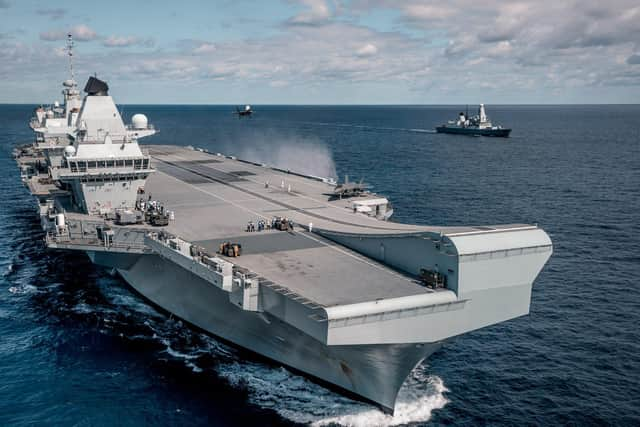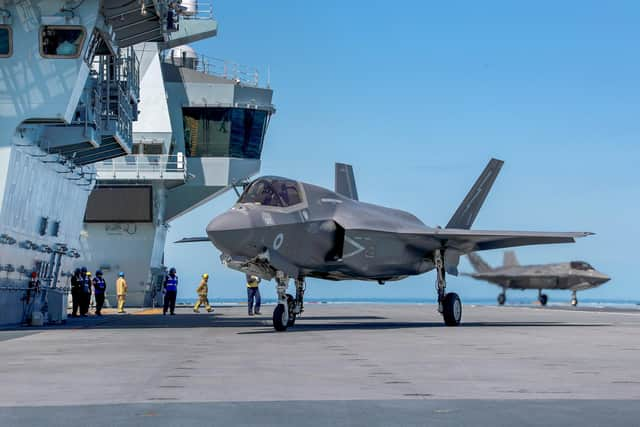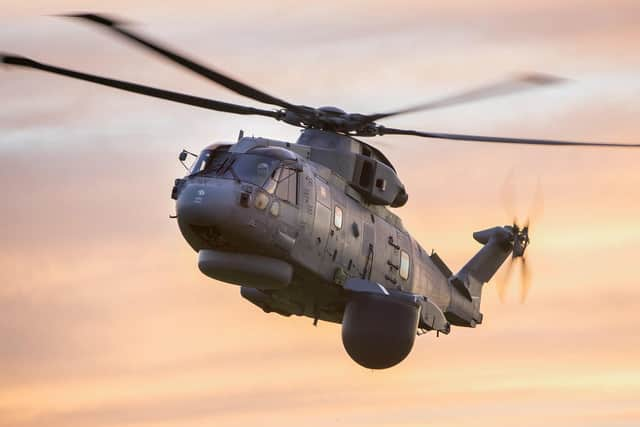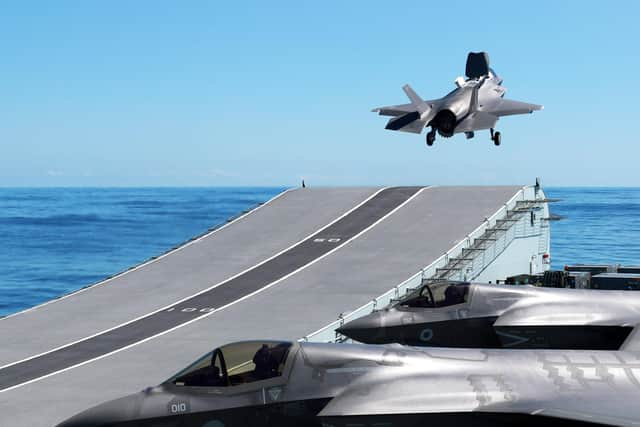Royal Navy aircraft carriers blighted by lack of support ship and critical radar as MoD told to 'get a grip of costs' by watchdog
and live on Freeview channel 276
The National Audit Office (NAO) said stumbling blocks in the project meant the ability of the navy to operate its two new massive carriers may be severely restricted due to a lack of support vessels to keep them supplied.
The navy has just one supply ship able to keep Britain’s future carrier strike force stocked with food and ammunition while on operations, the NAO claimed.
Advertisement
Hide AdAdvertisement
Hide AdThe NAO also warned the force's new Crowsnest airborne radar system – which forms a critical part of its defences – was running 18 months late, further diminishing the carriers strike group's capabilities during its first two years.


Officials added the Ministry of Defence (MoD) had yet to commit the funding required for enough of the F-35B stealth jets to sustain carrier operations over their 50-year lifespan.
Meg Hillier, chairman of the Commons’ public accounts committee, which follows the work of the NAO, said: ‘The Ministry of Defence has lofty ambitions for the carriers but hasn't put its money where its mouth is. Worryingly, it still doesn't know the full cost of supporting and operating carrier strike.
‘It must now ensure that the three front-line commands involved sing from the same hymn sheet. Otherwise, the Royal Navy will be stuck with a hollowed-out capability and unable to satisfy expectations.’
Advertisement
Hide AdAdvertisement
Hide Ad

Officials from the NAO blamed the delay on defence subcontractor, Thales, for ‘failing to meet its contractual commitments for developing equipment’ and not providing ‘sufficient’ detail on the project’s progress.
‘Neither (the) MoD nor its prime contractor, Lockheed Martin, were aware of these problems until it was too late, reflecting MoD’s ineffective oversight of its contract with Lockheed Martin,’ the NAO said.
Britain’s former top sailor, Admiral Lord Alan West told The News he ‘shared’ the NAO’s ‘concerns’ and added: ‘There needs to be some serious kicking of those responsible for the delay.’
Advertisement
Hide AdAdvertisement
Hide Ad

The MoD has said it expects to meet its target of declaring an ‘initial operating capability’ for carrier strike, with a fully-trained Lightning II squadron of up to 12 jets, by December 2020 – albeit with only a ‘basic’ radar capability.
However, the NAO said it faced a ‘tight timetable’ if it was to achieve its next milestone of developing a ‘full operating capability’ – with two F-35 squadrons operating from one of the carriers – by 2023.
It also said the MoD had long been aware the lack of support ships would restrict the force's ‘operational freedom’ but had yet to come up with a solution.
A competition to build three new vessels was scrapped due to concerns about value for money, delaying their introduction by up to three years.
Advertisement
Hide AdAdvertisement
Hide Ad

It was now uncertain whether the first of the ships would be ready in time for 2028 when the one existing ship is due to be taken out of service.
And costs for the Lightning II project had also risen from £9.1bn to £10.5bn, due to capability upgrades, with further increases expected, the NAO added.
The MoD originally planned to buy 138 of the jets but has so far only committed to purchasing 48.
Lord West said: ‘We either have carrier strike or we don’t. Failing to provide enough aircraft to have 35 F35B in each carrier in a national emergency, failing to have sufficient support ships and vital airborne early warning makes no sense.’
Advertisement
Hide AdAdvertisement
Hide AdThe MoD is now planning to review the number of aircraft it needs as part of the government's integrated review of security, defence, development and foreign policy.
An MoD spokesman said: ‘Carrier strike is a complex challenge, which relies on a mix of capabilities and platforms. We remain committed to investing in this capability, which demonstrates the UK's global role.
‘Despite the disruptions of Covid-19, the Carrier Strike group is on track for its first operational deployment.’
A message from the Editor
Thank you for reading this story on portsmouth.co.uk. While I have your attention, I also have an important request to make of you.
With the coronavirus lockdown having a major impact on many of our advertisers - and consequently the revenue we receive - we are more reliant than ever on you taking out a digital subscription.
Subscribe to portsmouth.co.uk and enjoy unlimited access to local news and information online and on our app. With a digital subscription, you can read more than 5 articles, see fewer ads, enjoy faster load times, and get access to exclusive newsletters and content. Visit our Subscription page now to sign up.
Our journalism costs money and we rely on advertising, print and digital revenues to help to support them. By supporting us, we are able to support you in providing trusted, fact-checked content for this website.
Comment Guidelines
National World encourages reader discussion on our stories. User feedback, insights and back-and-forth exchanges add a rich layer of context to reporting. Please review our Community Guidelines before commenting.